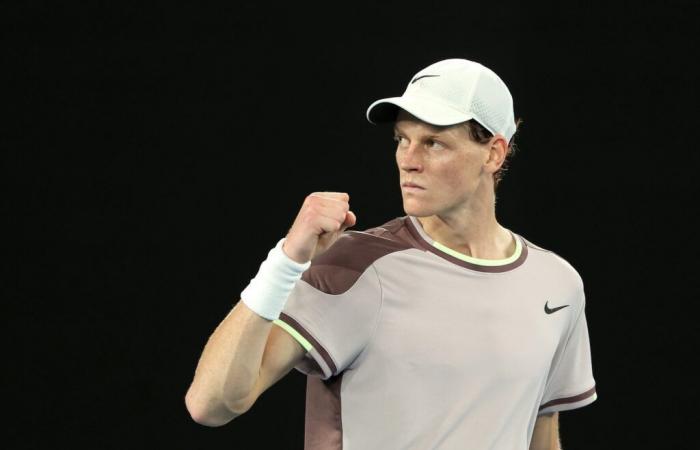Ten months and over 68 tournaments: tennis has the longest sporting season of all sports along with golf, with the final two tournaments on the calendar set for November 10. Only at this point do the players start to think about preparing for the following year, about holidays, about what they want. But this is not the case for everyone. The best eight players of the year, when everyone else is already on holiday to calm their nerves after an exhausting year, are still in the field for the ATP Finals. This is the most important tournament organized by the ATP, the most awaited after the Slams, the one that sees the eight best players of the year on the field according to the Race, a ranking based on seasonal performance. The Finals are also the moment of the season in which the Race practically aligns with the official ranking: the eight best tennis players in the world in singles and the eight best couples try to grab the only tournament that allows you to triumph even by losing a match , just like what happened to Djokovic a year ago – defeated by Sinner in the group stage and then winner of the final, also played against Sinner, a few days later.
The ATP Finals are also the event in which the player who ends the year as number one in the ranking is rewarded. This year it will be Jannik Sinner's turn to receive the award from Andrea Gaudenzi, moreover in Turin. It is difficult to imagine a more important and significant moment than this in the history of Italian tennis. The stars aligned close to 2020: first the appointment of Andrea Gaudenzi (2019) as president of the ATP, then the choice of Turin as the venue for the Finals for five years and, finally, the definitive consecration of Jannik Sinner as one of the best tennis players in the world, reaching first place in the ATP ranking. Turin was in the running with Manchester, Singapore and Tokyo to succeed London, home of the Finals from 2009 to 2020. What was decisive was what Angelo Binaghi, the president of FITP, defined as “the Italian system”, that is, public, regional and state, necessary to offer economic guarantees for approximately 78 million euros. But Binaghi's long-range vision was also decisive. And if there is one thing that the number one in Italian tennis does not lack, it is precisely the ability to aim high with courage: during Covid he managed to have ATP tournaments played in Cagliari, Parma, Florence, slipping into gaps in the calendar with a promptness and cunning typical of great leaders. He earned the public's favor with years of free tennis on SuperTennis TV, he even invested a substantial budget to bring a free-to-air Slam back to television, the US Open, and then agreed with Sky to replenish a schedule that had become empty after satellite TV had bought the rights to the most important men's tournaments, a tangible sign of the Italian public's newfound interest in tennis.
In short, Italian tennis is experiencing a flourishing moment in every aspect: we have the world number one in men's tennis, Jasmine Paolini who plays two Slam finals, we are reigning champions in the Davis Cup, membership is increasing also thanks to club members . Without forgetting Paddle and Pickleball, sports that are harbingers of broadening prospects and income. Finally, FITP's budget, with the money earned from the (increasingly expensive) tickets to the Italian Internationals in Rome and those of the Finals in Turin, can be defined as safe. It can be said without a doubt that the assignment of the Finals to Turin is Binaghi's greatest victory as president. For the 2023 edition alone, FITP presented a study that calculates the total impact of the tournament at 306 million euros; the Sanremo Festival, to give another important example, stops at 205 million. Almost two thousand people work at the Finals, which include 65 million in tax revenue, over 483 million total spectators (also counting social media), over 40% of the spectators come from abroad and a satisfied audience, including paying and hospitality , which stands at 98%. And if the Rome tournament still remains ahead, at least in terms of numbers, it must also be said that it is a longer event, with many more players and many more matches. Bringing a major tennis tournament back to Northern Italy was a great success.
Now we need to convince the ATP that Turin is still the right venue. There are rumors that Milan, which also hosted the NextGen Finals, could be in the running to take the Finals. But this is a city without a facility that can accommodate as many spectators as Turin – the Allianz Cloud hosts a maximum of 5,000 spectators. Binaghi wants everyone's help for the confirmation of Turin also to avoid the Arab specter, considering that from this year the WTA finals will take place for the first time in Riyadh, the capital of Saudi Arabia. This is why the FITP president, every time he has a microphone near him, reminds us that everyone's commitment is needed to ensure that more people can be hosted, to expand the InAlpi Arena. “Everyone must do their part, against us there are the Arabs, the greatest nations, the great world capitals.” Expanding or redeveloping the structure built by Isozaki for the 2006 Turin Olympics, as well as building new ones, would mean offering Turin and Italy new possibilities for hosting major events. Like for example the indoor concerts of artists who usually end up skipping the trip to Italy when they organize their world tours. Binaghi is firmly convinced that the audience for the Finals can grow further: «The current 15,657 seats», he said, «are very few. We need to invest in the InAlpi Arena: the capacity must increase.”
The size of the sports facilities in Italy is an obsession of the president, who cyclically fears moving the Rome tournament to other parts of Italy precisely because of the limited capacity of the Foro Italico. Also for this reason, if you think about it, the only way to increase the economic numbers of the tournament is to increase ticket prices. A practice that happens regularly: you pay at least 25 euros to see training at the Circolo della Stampa sporting in Turin or at the InAlpi Arena, and if you then want to see some matches of the tournament you need at least 240 euros for an upper stand – from which the match takes place he sees, yes, but not so well. It costs 380 euros for the stalls sector two and 450 for stalls one, the parterre costs almost 500 euros. For the final we start from over 300 euros for seats with poor visibility up to 600 for the front rows. In Monte Carlo and other Masters 1000 tournaments, you can watch the final even for less than one hundred euros. The Federation offers discounts of 20% on tickets and 10% on season tickets, but only to its members. For most people, tennis ticket prices – not just in Turin – have become unaffordable.
What makes the Finals unmissable, however, is the formula with which they are played: the two groups were created with the aim of offering more matches between the best players on the circuit. Each participant is guaranteed to play at least three matches, in a solemn atmosphere created by the soft lights on the audience and the pitch as the only illuminated space. The Finals are also the only tennis tournament where match start times are known months in advance. However, we have to wait for the draw to find out who will play. This allows for unparalleled programming for those who wish to watch the matches. From the players' point of view, in addition to the prestige of being on the field in the last event of the season, there is a record prize money: the undefeated winner can collect around 4.8 million dollars, while participation alone, even without victories , is worth approximately 325 thousand dollars.
The tournament's roll of honor testifies to the quality of the winners, but raises some objections to the lack of Slam titles for some of them. Dimitrov, Zverev and Tsitsipas, for example, have never won a major, and the ATP Finals represent the most important success of their careers. Before them, only Davydenko managed to win the tournament as he was not a Slam winner, placing himself in the roll of honor between Djokovic, Murray and Federer. The ATP Finals are undoubtedly the tournament that celebrates the conclusion of the tennis season. And to sublimate this third Italian edition, a success now consolidated at an economic and federal level, only one thing is missing: on Sunday 17 November Jannik Sinner will be the one to lift the cup with the blue ribbons.






